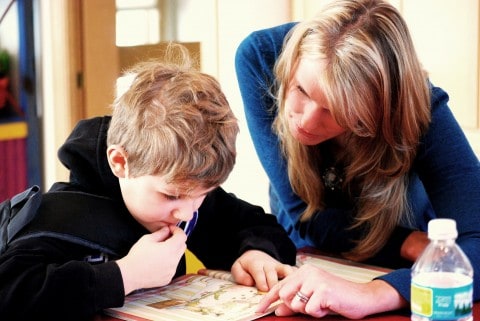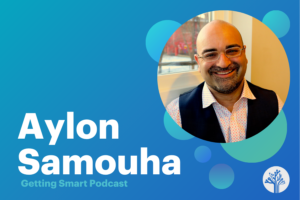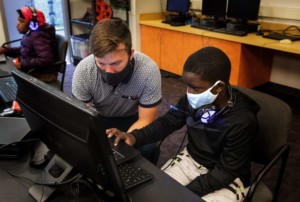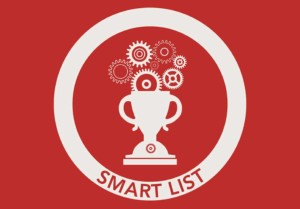The Power of Personal Relationship in Personalized Learning

Cara Thorpe
Personalized learning, a concept gaining momentum and credibility in the education field today, shows great potential as a catalyst for student learning. Schools across national borders are revitalizing their curriculum through this approach emphasizing student choice and learning to learn.
When we experience the success of personalized learning during the school day, the question follows: how can we extend it beyond the school day? The answer varies by zip-code across the country, school districts, schools, and households.
So. What is the best after-school learning option? And how do all students gain access to personalized learning? An appeal to the power of relationship challenges teaching talents and passions to align in an effort to extend meaningful, personalized learning beyond the school day: make it personal.
Tom Vander Ark and Mary Ryerse cite the link between relationship and learning in their recently published book Smart Cities, with the statement, “Learning, especially for children, is and will remain a distinctly relationship-based enterprise, so organizational design and development will remain more important than education technology though most breakthroughs will combine both.” Through the process of building relationships, we gain understanding of our ability to process, apply, or communicate information. We also gain self-understanding and awareness in a supportive setting. The trust aspect of a student-teacher relationship becomes even more important as we ask students to participate in areas where they feel weak or vulnerable, beyond what they are already doing in school.
Adding educational supplement to a student’s week affords parents and care-givers the opportunity to add a powerful relationship-element into a child’s life. Adding the right model in the right way scaffolds a student’s current educational model, preparing for more meaningful future experiences and independence. The good news: there is not one right way. However, in spite of our desire to immediately fill a need, extending the school day in a meaningful way requires consideration and planning. This is the fun part!
First: Realize YOU ARE NOT ALONE. Connect with other parents, teachers, coaches, relatives, and caregivers whom you trust. Ask questions that help you gain insight on others’ positive educational experiences in the community – especially those utilizing components of personalized learning. Your search will provide valuable information on relationship-based resources in your local area and support for you as well.
Reconnect with your child. If you are considering hiring a tutor or working on a particular school-related weakness, the relationship with your child has likely been strained. Take time away from stress-inducing conversations and find an activity you enjoy doing together. Rediscover the silly, fun-loving sides of you that may have gotten lost in the school battle. What are the ways you can celebrate your child’s strengths through play or discussion?
Reflect on your current after-school routine. What is the ideal? How does it differ from your current situation? Ask your kiddo(s): How can we work more effectively (or happily) together? What is the specific academic area we would like to supplement, improve, or build upon? What is the way that your child learns, thinks, or achieves best?
Respond to your reflection. The program you create with your child’s input should: 1) be meaningful 2) connect to the school curriculum in a novel or flexible way 3) provide opportunity for routine, organization, and reflection 4) inspire further learning opportunities 5) spark conversation and sharing in your home.
Some possibilities: is there a service project in your community that could tie into learning? Do you know a group of students who is particularly interested in a specific subject, sport, language, geographical location or activity? How can you utilize it to facilitate an academic spark? A mentor may gather a handful of science-minded kiddos who need help practicing multiplication facts, or you may help organize an AP test study-group with the goal of cooking healthy dinner together each week. A first grader may study with her Orton-Gillingham tutor and create a button collection through a reward-system. Perhaps there’s a writing assignment that sparks an interest with your child or a year-long project with several benchmarks built in along the way. Students can learn about story writing by creating and illustrating their own comic books. Each possibility capitalizes on the student-mentor relationship to build on current knowledge and open new learning pathways. The end-goal remains in sight, but the way of attaining the goal evolves with time. Programs may be individual, small-group, or a blend of each approach.
After school learning that utilizes the power of relationship to stimulate process-oriented dialog, aimed at reflection, goal setting, and relationship-building creates a venue through which a learner explores his or her personal strengths and weaknesses. With this new understanding, a student more thoughtfully and purposefully navigates the route of personalized learning – in and out of the classroom.
This blog is part of our Smart Parents series in partnership with the Nellie Mae Education Foundation. We would love to have your voice in the Smart Parents conversations. To contribute a blog, ask a question, or for more information, email Bonnie Lathram with the subject “Smart Parents.” For more information about the project see Parents, Tell Your Story: How You Empower Student Learning as well as other blogs:
- 3 Ways Parents Can Spot Student-Centered Learning
- Parental Involvement in Schools Matters: A Teacher’s Perspective
- Lessons for Learning and Life: 10 Messages Parents (and Teachers) Can Teach Kids
 Cara Thorpe, M. Ed., is the founder and president of K-12 Learning Solutions, a company whose educational specialists range in activities from pre-reading intervention to standardized test prep for high school and beyond. A parent herself, Cara helps families create and execute innovative, personalized educational plans.
Cara Thorpe, M. Ed., is the founder and president of K-12 Learning Solutions, a company whose educational specialists range in activities from pre-reading intervention to standardized test prep for high school and beyond. A parent herself, Cara helps families create and execute innovative, personalized educational plans.







wgiraudcomeau
With all due respect, what ever happened to "down time" after school? My children need it and so did I as a child. School is a busy, noisy, intense, and stimulating time. My children need quiet time at the end of the day school day. To calm and decompress. To process and sort out the experiences of the day. To lay on the lawn and watch a bug in the grass, or imagine shapes in the clouds. To spend time with the dog. To read a book. To poke in a puddle with a stick. To draw pictures, build lego or do play dough. To think, to dream, to wonder, to contemplate, to relax. Then, whatever happened to chores? Taking care of pets? Helping with supper? Aren't children's lives busy and structured enough without a planned after school program that connects to the school curriculum in a novel or flexible way and provides opportunity for routine, organization, and reflection after? How about give them some space, some down time and some balance?